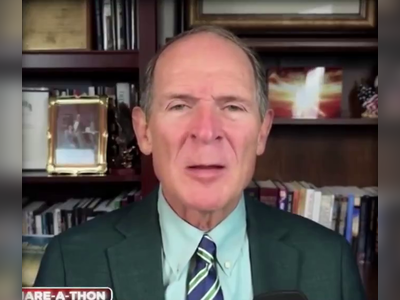Global Economic Outlook Amid Rising Inflation and Interest Rates
Economies worldwide face challenges as central banks adjust monetary policies in response to persistent inflation.
As of late 2023, the global economic landscape is significantly influenced by rising inflation rates and subsequent adjustments in monetary policies by central banks around the world.
In the United States, the Federal Reserve has implemented a series of interest rate increases, aiming to combat inflation that remains above its long-term target of 2%.
Most recently, the Fed raised its benchmark interest rate to a range of 5.25% to 5.50%, marking the highest level since 2001.
In the Eurozone, the European Central Bank (ECB) has similarly adjusted its monetary policy in response to inflation hovering around 4%, well above the ECB's target.
The central bank increased interest rates for a ninth consecutive meeting in September 2023, raising its key rate to 4.00%.
Analysts anticipate that the ECB may continue tightening monetary policy further into 2024 to address ongoing inflationary pressures.
In the United Kingdom, the Bank of England has also raised interest rates, responding to inflation that reached 6.7% in August 2023. The current rate stands at 5.25%, with expectations that rates may rise further if inflation remains persistent.
This trend across major economies reflects a coordinated effort by monetary authorities to stabilize prices amid ongoing global supply chain disruptions and the lingering impacts of the COVID-19 pandemic.
Emerging markets have not been spared from the effects of increased interest rates.
Countries such as Brazil and India have adjusted their monetary policies to reflect changing global economic conditions.
Brazil's central bank recently held its key rate steady but signaled that further reductions may be halted due to domestic inflation concerns.
Meanwhile, India's Reserve Bank has maintained its repo rate at 6.50% as it navigates a balancing act between stimulating growth and controlling inflation, which has remained above target.
Commodity prices have also been impacted by the shifts in monetary policy and inflation expectations.
Oil prices, for instance, reached a peak in early June 2023 due to supply cuts from major producers, while natural gas prices have exhibited volatility linked to geopolitical tensions and weather patterns affecting production.
Labor markets continue to demonstrate resilience, with unemployment rates remaining relatively low in many developed economies.
In the United States, the unemployment rate stood at 3.8% in August 2023. However, labor shortages persist in various sectors, complicating recovery efforts.
In summary, the global economic outlook in late 2023 is characterized by simultaneous inflationary pressures, rising interest rates, and a cautious approach from policymakers as they seek to navigate these complex challenges.
In the United States, the Federal Reserve has implemented a series of interest rate increases, aiming to combat inflation that remains above its long-term target of 2%.
Most recently, the Fed raised its benchmark interest rate to a range of 5.25% to 5.50%, marking the highest level since 2001.
In the Eurozone, the European Central Bank (ECB) has similarly adjusted its monetary policy in response to inflation hovering around 4%, well above the ECB's target.
The central bank increased interest rates for a ninth consecutive meeting in September 2023, raising its key rate to 4.00%.
Analysts anticipate that the ECB may continue tightening monetary policy further into 2024 to address ongoing inflationary pressures.
In the United Kingdom, the Bank of England has also raised interest rates, responding to inflation that reached 6.7% in August 2023. The current rate stands at 5.25%, with expectations that rates may rise further if inflation remains persistent.
This trend across major economies reflects a coordinated effort by monetary authorities to stabilize prices amid ongoing global supply chain disruptions and the lingering impacts of the COVID-19 pandemic.
Emerging markets have not been spared from the effects of increased interest rates.
Countries such as Brazil and India have adjusted their monetary policies to reflect changing global economic conditions.
Brazil's central bank recently held its key rate steady but signaled that further reductions may be halted due to domestic inflation concerns.
Meanwhile, India's Reserve Bank has maintained its repo rate at 6.50% as it navigates a balancing act between stimulating growth and controlling inflation, which has remained above target.
Commodity prices have also been impacted by the shifts in monetary policy and inflation expectations.
Oil prices, for instance, reached a peak in early June 2023 due to supply cuts from major producers, while natural gas prices have exhibited volatility linked to geopolitical tensions and weather patterns affecting production.
Labor markets continue to demonstrate resilience, with unemployment rates remaining relatively low in many developed economies.
In the United States, the unemployment rate stood at 3.8% in August 2023. However, labor shortages persist in various sectors, complicating recovery efforts.
In summary, the global economic outlook in late 2023 is characterized by simultaneous inflationary pressures, rising interest rates, and a cautious approach from policymakers as they seek to navigate these complex challenges.
AI Disclaimer: An advanced artificial intelligence (AI) system generated the content of this page on its own. This innovative technology conducts extensive research from a variety of reliable sources, performs rigorous fact-checking and verification, cleans up and balances biased or manipulated content, and presents a minimal factual summary that is just enough yet essential for you to function as an informed and educated citizen. Please keep in mind, however, that this system is an evolving technology, and as a result, the article may contain accidental inaccuracies or errors. We urge you to help us improve our site by reporting any inaccuracies you find using the "Contact Us" link at the bottom of this page. Your helpful feedback helps us improve our system and deliver more precise content. When you find an article of interest here, please look for the full and extensive coverage of this topic in traditional news sources, as they are written by professional journalists that we try to support, not replace. We appreciate your understanding and assistance.










